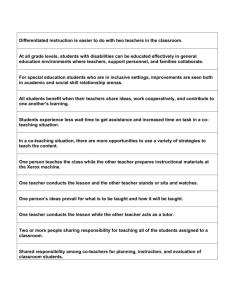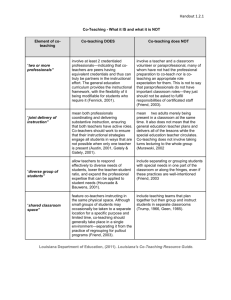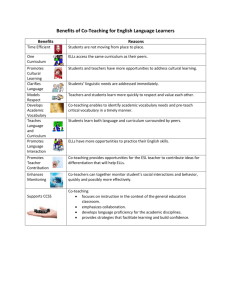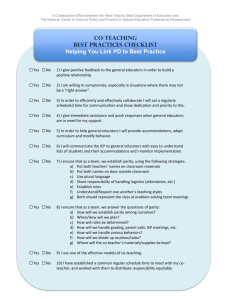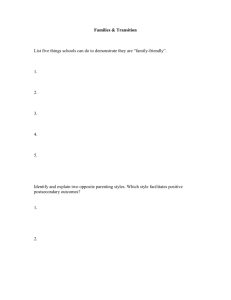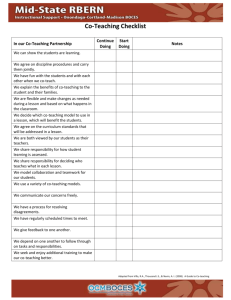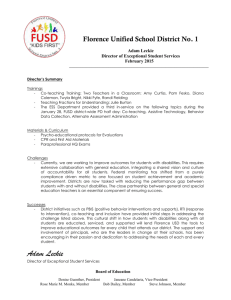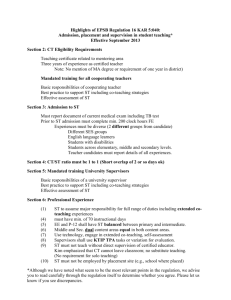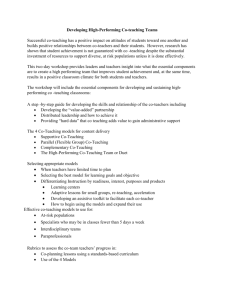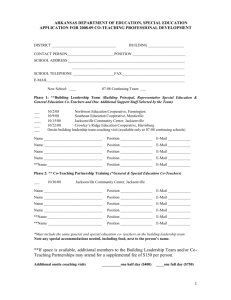Issue Suggestion
advertisement
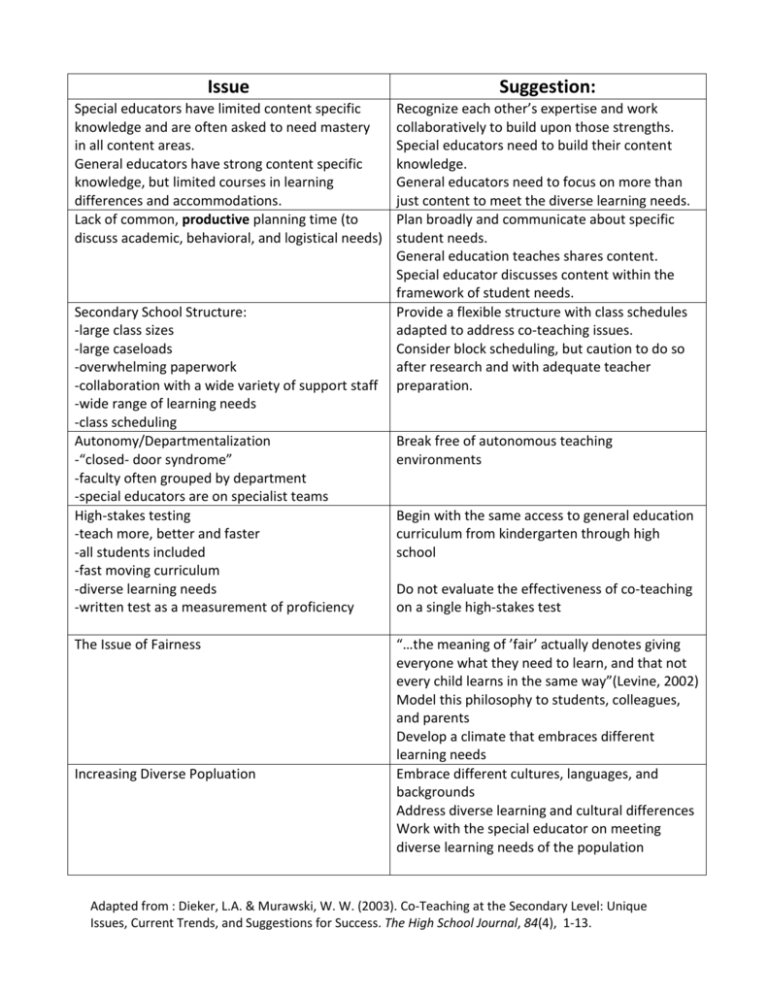
Issue Suggestion: Special educators have limited content specific knowledge and are often asked to need mastery in all content areas. General educators have strong content specific knowledge, but limited courses in learning differences and accommodations. Lack of common, productive planning time (to discuss academic, behavioral, and logistical needs) Recognize each other’s expertise and work collaboratively to build upon those strengths. Special educators need to build their content knowledge. General educators need to focus on more than just content to meet the diverse learning needs. Plan broadly and communicate about specific student needs. General education teaches shares content. Special educator discusses content within the framework of student needs. Provide a flexible structure with class schedules adapted to address co-teaching issues. Consider block scheduling, but caution to do so after research and with adequate teacher preparation. Secondary School Structure: -large class sizes -large caseloads -overwhelming paperwork -collaboration with a wide variety of support staff -wide range of learning needs -class scheduling Autonomy/Departmentalization -“closed- door syndrome” -faculty often grouped by department -special educators are on specialist teams High-stakes testing -teach more, better and faster -all students included -fast moving curriculum -diverse learning needs -written test as a measurement of proficiency The Issue of Fairness Increasing Diverse Popluation Break free of autonomous teaching environments Begin with the same access to general education curriculum from kindergarten through high school Do not evaluate the effectiveness of co-teaching on a single high-stakes test “…the meaning of ’fair’ actually denotes giving everyone what they need to learn, and that not every child learns in the same way”(Levine, 2002) Model this philosophy to students, colleagues, and parents Develop a climate that embraces different learning needs Embrace different cultures, languages, and backgrounds Address diverse learning and cultural differences Work with the special educator on meeting diverse learning needs of the population Adapted from : Dieker, L.A. & Murawski, W. W. (2003). Co-Teaching at the Secondary Level: Unique Issues, Current Trends, and Suggestions for Success. The High School Journal, 84(4), 1-13. Strategies for Success: Provide time prior to co-teaching to discuss curriculum and student needs Consider proactive instructional accommodations Determine how students will be assessed and evaluated Consider the use of peer tutoring and cooperative learning Participate in co-teaching courses Expect to progress through the stages of co-teaching (forming, storming, and norming [Norris, 1997]) Vary Co-Teaching Approaches (6 structures) Increase communication between subject/content area teachers Collaborate with no more than 2-3 co-teachers to build effective relationships and content knowledge Utilize the co-teachers to modify instruction, increase active learning, avoid lecture format, and for classroom management techniques Ensure that co-teachers have common planning time for co-planning, co-assessing, and developing the co-teacher relationship. Allow flexibility within the special educator’s schedule to meet the needs of students on his/her caseload; consider using a trained paraprofessional to provide support alternate the special educator Create clusters or interdisciplinary families similar to a middle-school model Have special educators divide their team by areas of expertise Novice co-teachers start small Consider innovative evaluations: portfolios, checklists, IEP grading, rubric grading, alternative and curriculum-based assessments Focus on self-advocacy and self-determination skills; meaningful transition planning and skills Evaluate your own co-teaching impact: pre/post assessments, questionnaires, surveys, curriculum-based assessments over time Utilize the two co-teachers for differentiation, remediation, or gifted instruction Foster culturally-responsive teaching; divide class by interest Adapted from : Dieker, L.A. & Murawski, W. W. (2003). Co-Teaching at the Secondary Level: Unique Issues, Current Trends, and Suggestions for Success. The High School Journal, 84(4), 1-13.
